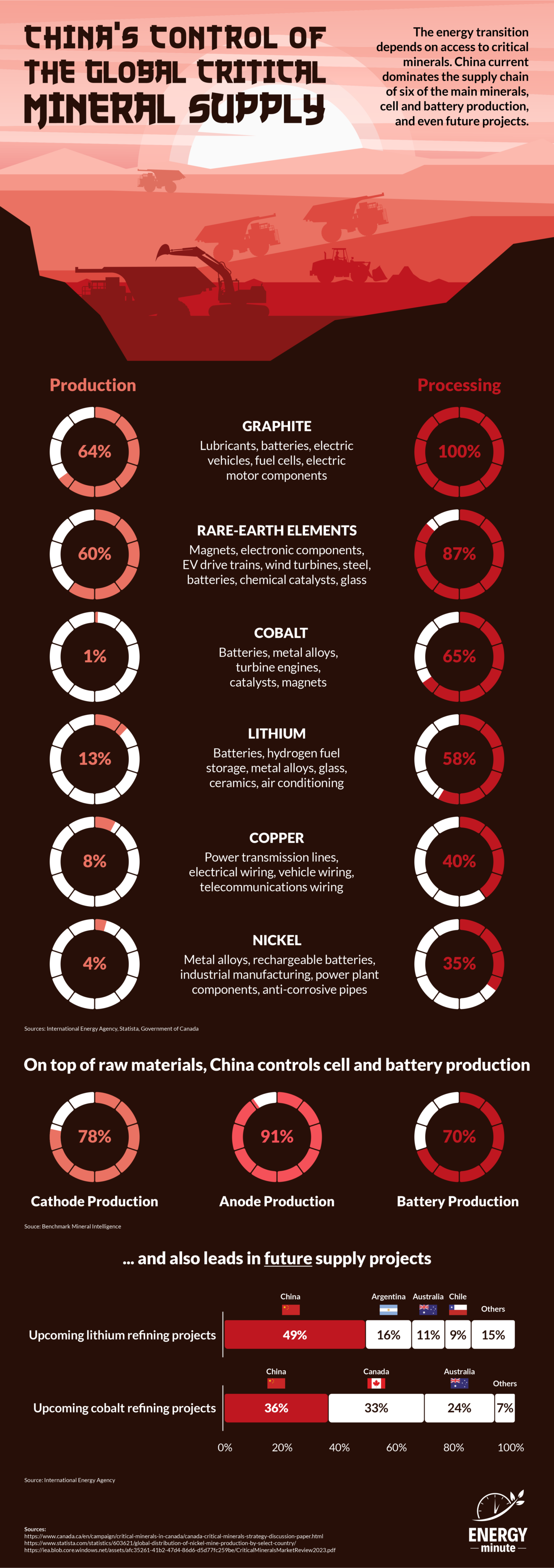By Aaron Foyer

Courtesy of ENERGYminute
See more articles and infographics from ENERGYminute HERE
How China gained control over critical minerals globally
The dominance of China in the critical mineral supply chain raised concerns among other nations, as it gave China significant geopolitical leverage and potential influence over various industries, including technology, defense, and renewable energy.
- Abundant Domestic Resources: China is rich in various critical minerals, including rare earth elements (REEs), lithium, and others. Its geology and resource endowment provided a natural advantage in the production of these minerals.
- Low-Cost Production: China’s competitive advantage in labor costs and lax environmental regulations allowed it to produce critical minerals more cheaply than many other countries, enabling the country to dominate global markets.
- Export Quotas and Restrictions: China imposed export quotas and restrictions on certain critical minerals, especially rare earth elements, which tightened global supply and increased China’s bargaining power.
- Vertical Integration: Chinese companies have integrated their supply chains, from mining and refining to manufacturing and export, facilitating a streamlined process and further strengthening their control over the supply chain.
- Investments in Overseas Mines: To ensure a steady supply of critical minerals, China invested in mining projects overseas, securing access to resources in other countries.
- State Support and Subsidies: The Chinese government provided significant financial support and subsidies to its critical mineral industry, giving domestic companies a competitive edge in the global market.
- Acquisition of Foreign Companies: China acquired ownership or stakes in foreign companies involved in the critical mineral supply chain, thereby gaining more control over the production and distribution processes.
- Technological Advancements: China invested in research and development of advanced technologies related to critical mineral extraction and processing, further improving its competitiveness.
- Trade Agreements: Through strategic trade agreements with other countries, China secured access to critical minerals from foreign sources.
To reduce dependency on China and strengthen their own supply chains, other countries have been exploring ways to develop domestic resources, diversify sources, and promote recycling and sustainable practices for critical minerals.
Sources:
Canada’s critical minerals strategy: Discussion paper
Statista: Distribution of mine production of nickel worldwide in 2021, by country
IEA: Critical Mineral Review 2023
Share This:






